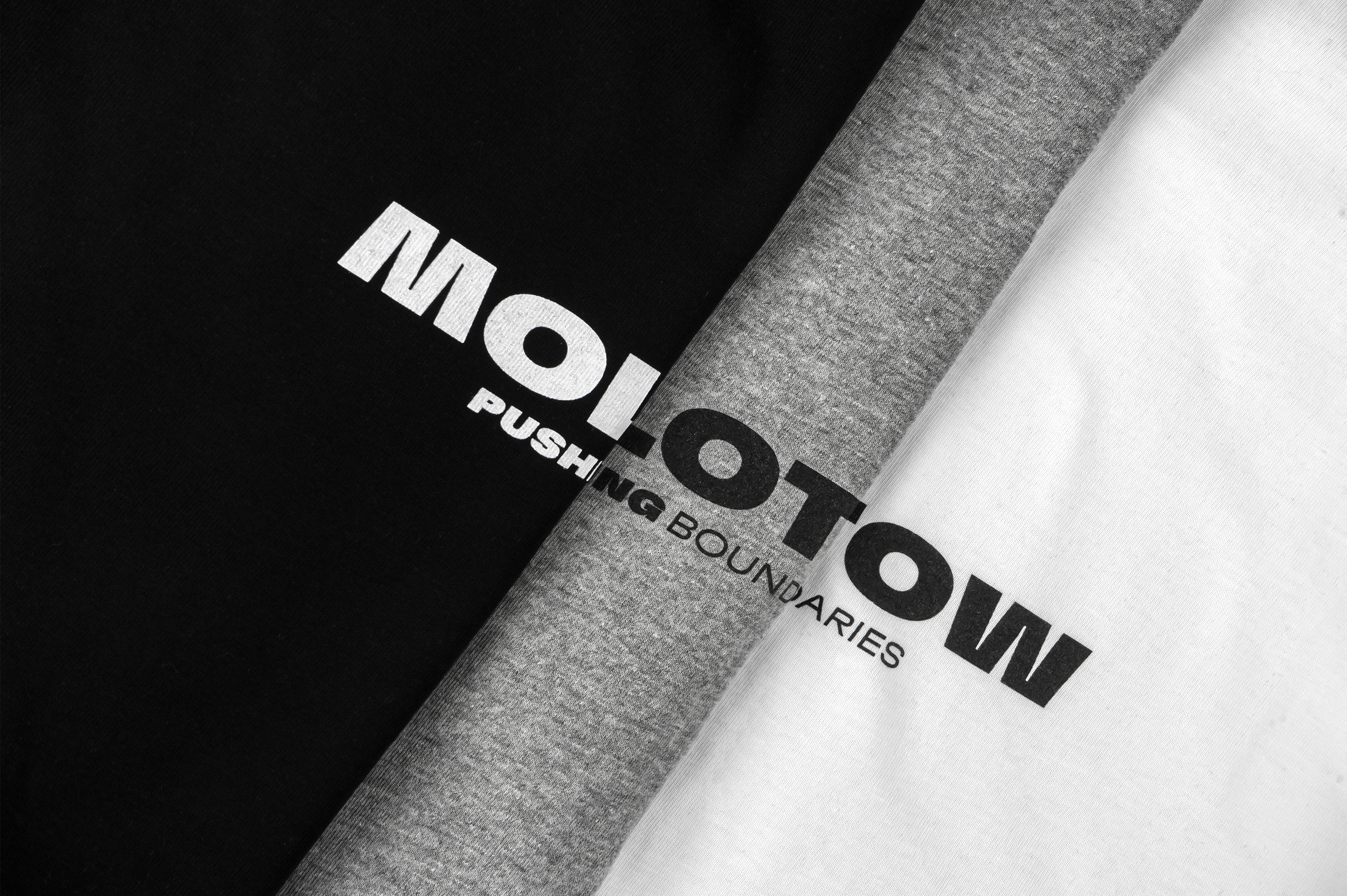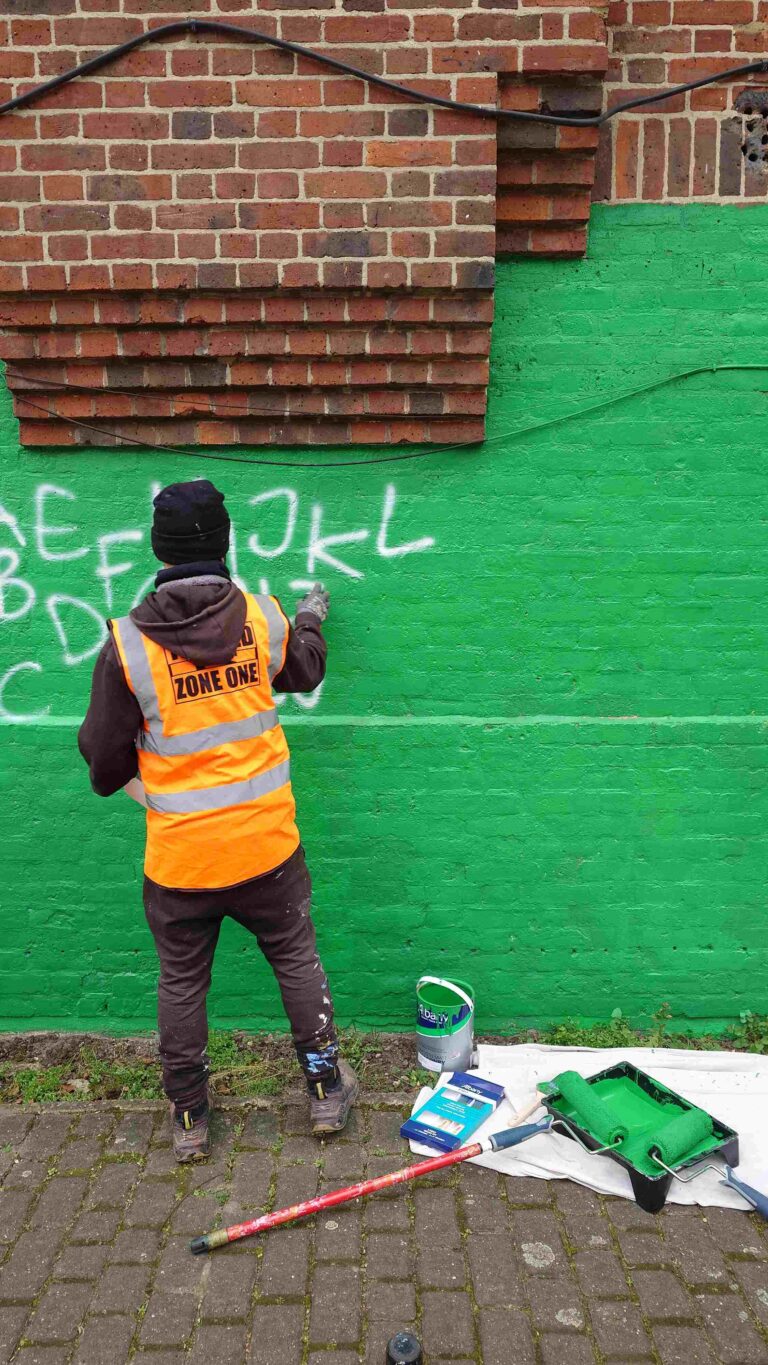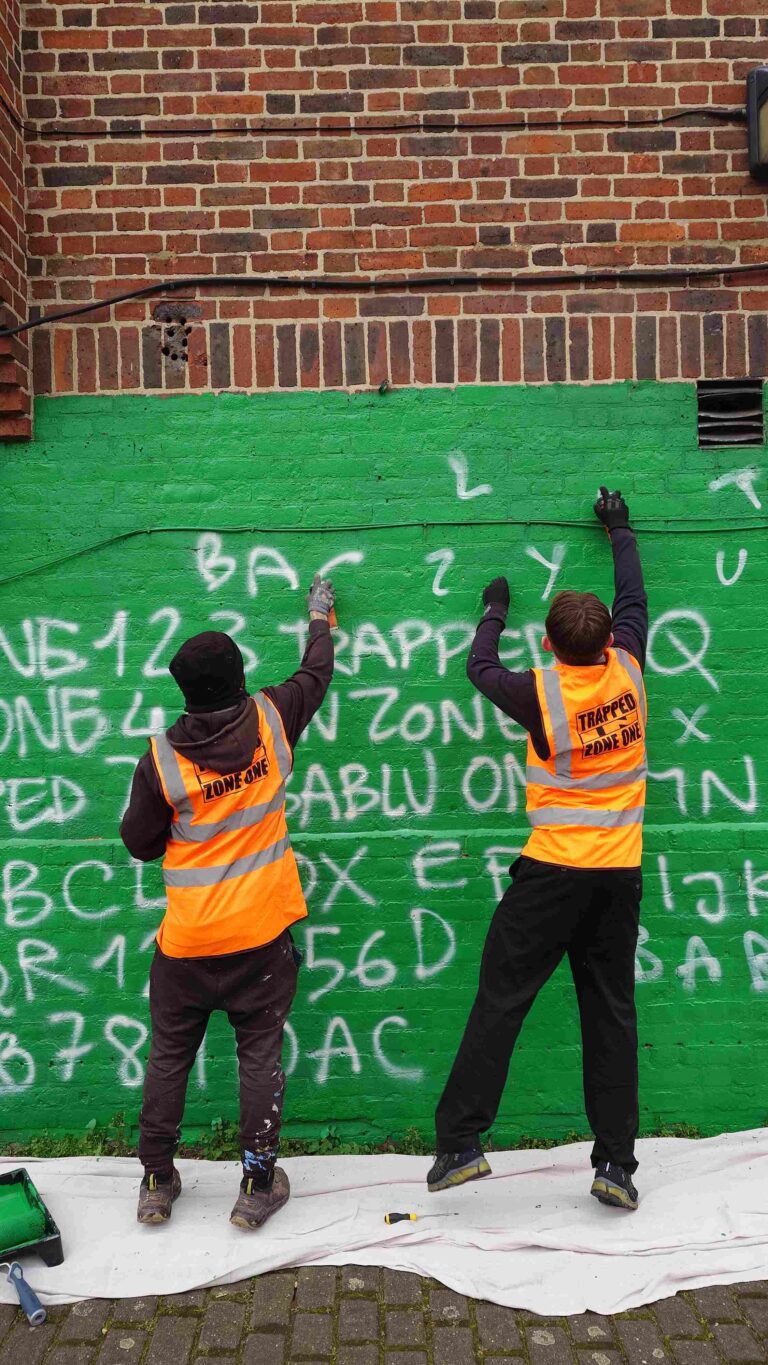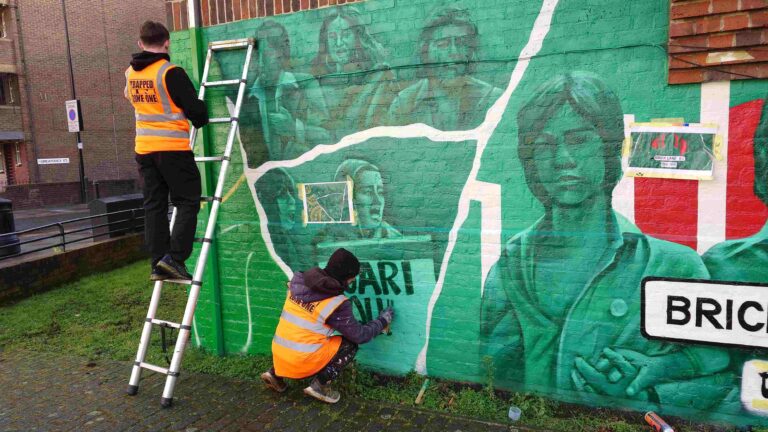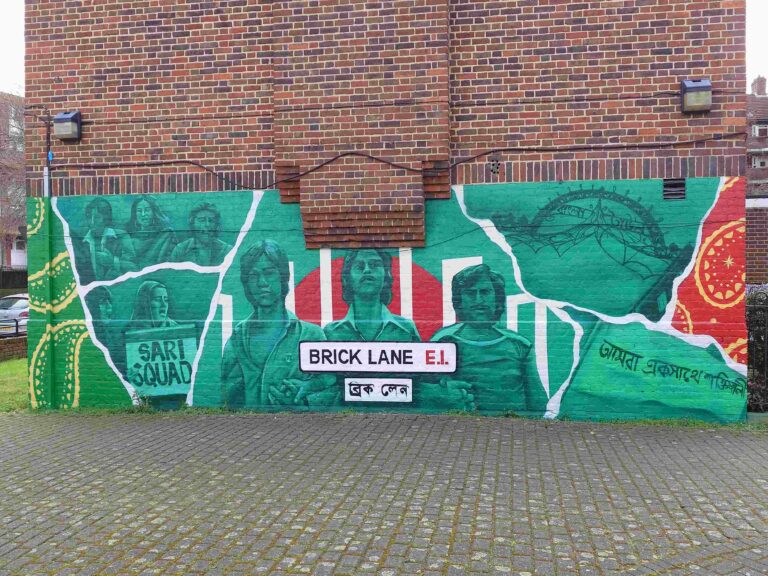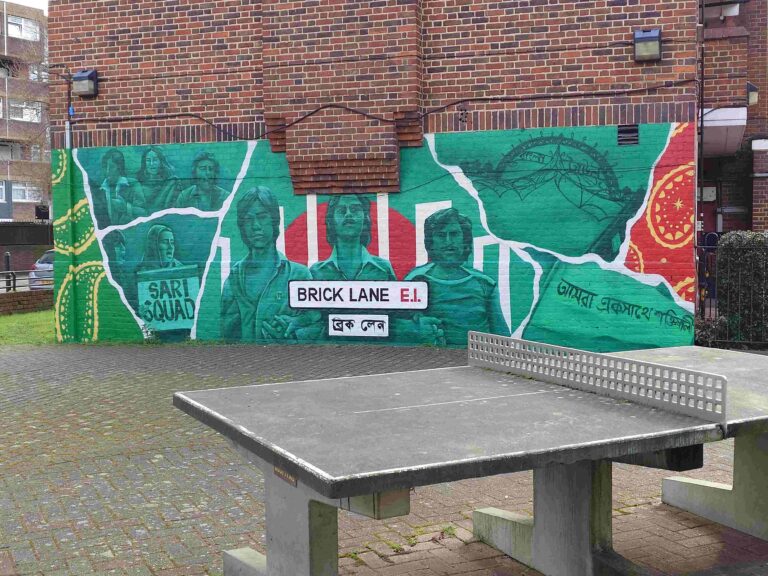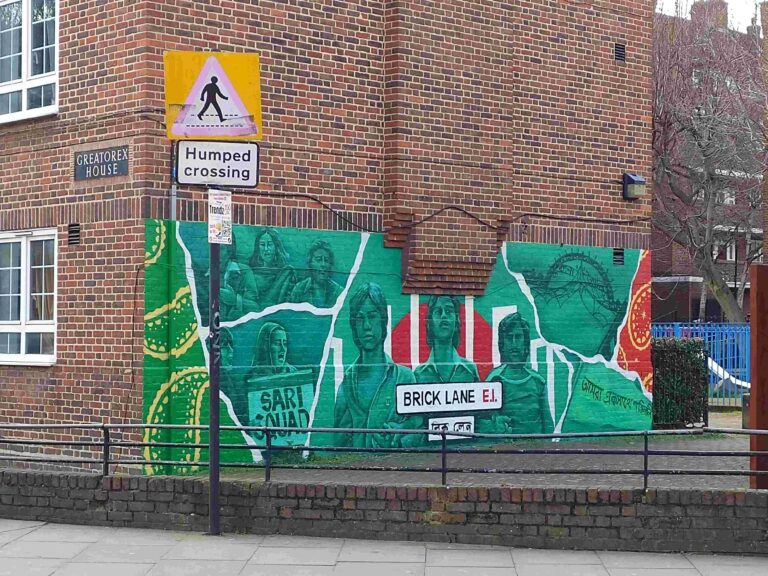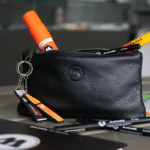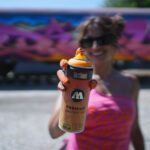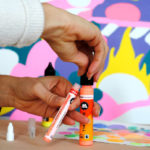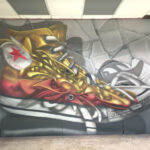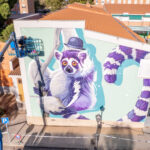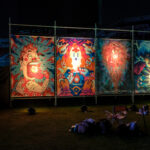The inspiration for this mural was from the exhibition, Brick Lane 1978: The Turning Point, the exhibition brought together 75 of Paul Trevor’s photographs for the first time celebrating East London’s Bengali activists of 1978.
The exhibition revealed the dramatic events in 1978 which were sparked by the racist murder of Altab Ali, a 24-year-old Bengali leather garments worker, and pays tribute to the activists who mobilised around the rallying cry of justice that followed.
This project’s focus was to provide disadvantaged communities, specifically focusing on Tower Hamlets, with free to access creative activities within community spaces and events. Tower Hamlets contains a large number of South Asian residents from Bangladesh, it was important to platform and listen to long existing community experience of racism dating from the 1970s after the tragic death of Altab Ali to the present day, spanning over 40 years and permit them input onto the ultimate creative co-design decisions.
The project allowed us to work with residents of the Tower Hamlets community ranging from young people to adults, specifically inclusive of locals with personal connections to Brick Lane and of diverse or working-class background.
The activities took place in partnership with young people from Mulberry School for Girls part of the Young Creators programme with Lonon Youth, Whitechapel Gallery and Tower Hamlets Archives Library, providing free to access in-person workshops, allowing the community to actively participate in a series of workshops sessions, and community events in conjunction with Poplar Harca at the Feldy Community Space.
The mural inspired by the colours of the Bangladesh flag using Molotow spray paint, the central image features Syed Mizan, Jamal Miah and Abdul Manik, all members of the Bangladesh Youth Front. It was taken by Paul Trevor on Curtain Road in London on 20 August 1978 at the Day of Action protest organised by Hackney & Tower Hamlets Defence Committee and Anti-Nazi League.
The other image’s on the design includes a reference to the Sari Squad, a group of activist women, who helped to defend multicultural clubs and gatherings from racist attacks in the early 1980s. They campaigned to raise public awareness for Afia Begum, a young Bangladeshi widow who was deported from London with her child, Asma, in 1984, despite there being no concrete justification for such action. The Shaheed Minar behind the central image is an interpretation of the national monument in Bangladesh, commemorating the martyrs of the Bengali Language Movement of 1952, and is now a place where London’s Bengali community gathers to mark International Mother Language Day. On the right-side there is the Brick Lane arch, designed by Meena Thakor and marking the entrance to “Banglatown,” erected in 1997 and below this is the unified message ‘We Are Stronger Together’ in Bengali text form to promote solidarity amongst all.
Thanks everyone for helping this to be a success in reinvigorating a sense of community spirit and physical congregation, providing a creative outlet for the residents, and getting all age groups involved. Feedback from those involved or in attendance repeatedly featured the importance of having spaces and methods to meet neighbours in such comfortable and activity-based settings, with young people especially able to benefit, learning about their heritage of the borough in a safe and economically viable environment.
